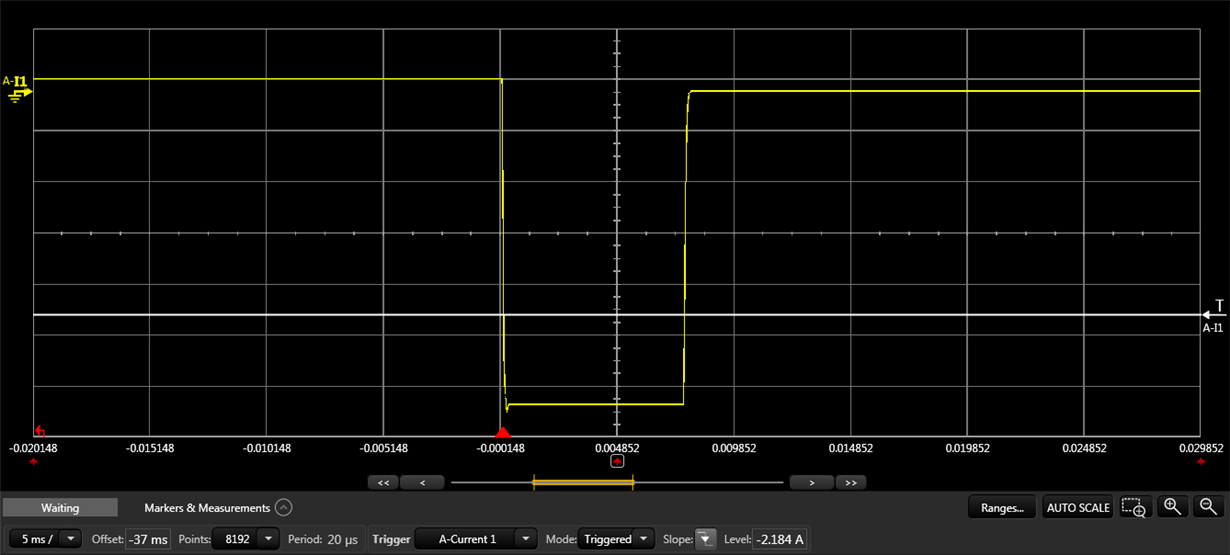Hi team,
We are currently using the BQ24780S in our design and we have a 2S Li-Ion configuration. The battery is only charged when using a 9V adapter.
When using a 5V adapter or a USB port on a laptop, we are able to run our system without the battery. However, once a battery is inserted, as this battery voltage (6.0-8.4V) is higher than the adapter or USB voltage (5V), we see a large current spike in our system (see graph below) which we have seen to cause laptops to shut down and issues with power adapters.
Are there any register or hardware changes that might help with this spike?
(The graph below shows 3A transient (using a 3A supply) when a battery is inserted)
Regards,
Akash Patel


